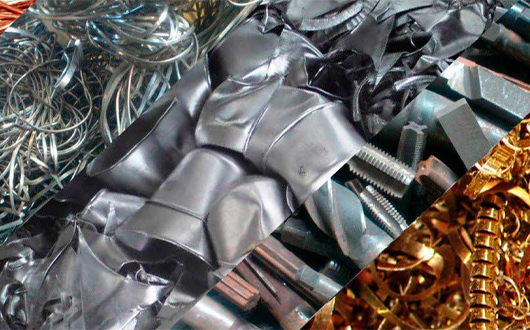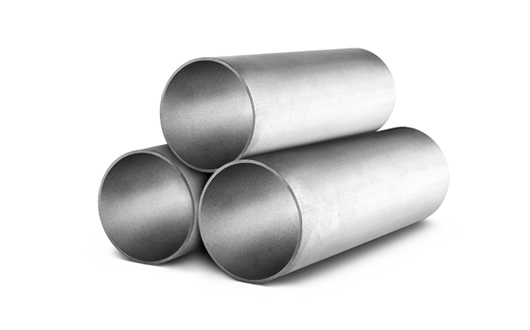Titanium and Ferrotitanium
Titanium itself is a transition metal element with a metallic luster, usually silver-grey in color. But titanium itself cannot be defined as a ferrous metal. Ferrotitanium can be said to be a ferrous metal because it contains iron.
Ferrotitanium is an iron alloy consisting of 10-20% iron and 45-75% titanium, sometimes with a small amount of carbon. The alloy is highly reactive with nitrogen, oxygen, carbon and sulfur to form insoluble compounds. It has low density, high strength and excellent corrosion resistance.The physical properties of ferrotitanium are: density 3845 kg/m3, melting point 1450-1500 ℃.
Difference Between Ferrous And Nonferrous Metals
The difference between ferrous and nonferrous metals is that ferrous metals contain iron. Ferrous metals, such as cast iron or carbon steel, have a high carbon content, which usually makes them prone to rust when exposed to moisture.
Nonferrous metals refer to alloys or metals that do not contain any appreciable amount of iron. All pure metals are non-ferrous elements, except for iron (Fe), which is also known as ferrite, from the Latin word "ferrum," meaning "iron."
Nonferrous metals tend to be more expensive than ferrous metals but are used for their desirable properties, including light weight (aluminum), high electrical conductivity (copper), and non-magnetic or corrosion-resistant properties (zinc). Some nonferrous materials are used in the steel industry, such as bauxite, which is used as a flux in blast furnaces. Other nonferrous metals, including chromite, pyrolusite, and wolframite, are used to make ferroalloys. However, many nonferrous metals have low melting points, making them less suitable for applications at high temperatures. Nonferrous metals are typically obtained from minerals such as carbonates, silicates, and sulfides, which are then refined by electrolysis.
Examples of commonly used ferrous metals include steel, stainless steel, carbon steel, cast iron, and wrought iron
The variety of nonferrous materials is vast, covering every metal and alloy that does not contain iron. Nonferrous metals include aluminum, copper, lead, nickel, tin, titanium, and zinc, as well as copper alloys such as brass and bronze. Other rare or precious nonferrous metals include gold, silver and platinum, cobalt, mercury, tungsten, beryllium, bismuth, cerium, cadmium, niobium, indium, gallium, germanium, lithium, selenium, tantalum, tellurium, vanadium and zirconium.
|
|
Ferrous Metals |
Non-Ferrous Metals |
| Iron Content |
Ferrous metals contain a significant amount of iron, typically more than 50% by weight.
|
Non-ferrous metals contain little to no iron. They have an iron content of less than 50%.
|
| Magnetic Properties |
Ferrous metals are magnetic and exhibit ferromagnetism. They can be attracted to magnets. |
Non-ferrous metals are non-magnetic and do not exhibit ferromagnetism. They are not attracted to magnets.
|
| Corrosion Susceptibility |
They are more susceptible to rust and corrosion when exposed to moisture and oxygen, primarily due to their iron content.
|
They are generally more resistant to rust and corrosion, making them valuable in applications where exposure to moisture is a concern. |
| Density |
Ferrous metals tend to be denser and heavier than non-ferrous metals.
|
Non-ferrous metals tend to be lighter and less dense than ferrous metals. |
| Strength and Durability |
They are known for their high strength and durability, making them suitable for structural and load-bearing applications.
|
Many non-ferrous metals, such as copper and aluminum, are excellent conductors of electricity and heat.
|
|
|
| |
|
|
| |
|
|
| |
|
|
| |
|
|
| |
|
|
Applications of Ferrotitanium
Aerospace Industry: Ferrotitanium alloy is widely used in the aerospace industry due to its high strength, corrosion resistance and low density. It is used to manufacture aircraft structures, engine parts, missile and rocket parts, etc.
Chemical Industry: Due to its resistance to corrosion, ferrotitanium is often used in the chemical industry, such as manufacturing reactors, pipes, pumps, etc.
Medical Devices: Ferrotitanium is also widely used in the medical field, such as making artificial joints, dental implants, surgical implants, etc., because it is biocompatible and has good corrosion resistance.
Marine Engineering: Ferrotitanium is widely used in the field of marine engineering, such as manufacturing seawater treatment equipment, ship parts, etc., because it is resistant to seawater corrosion and can be used for a long time in the marine environment.
Sporting Goods: Some sporting goods, such as high-end golf clubs, bicycle frames, etc., also use
ferrotitanium alloy to improve the strength and durability of the product.
In general, titanium-iron alloys are widely used in many fields due to their excellent properties and are very useful for products that require corrosion resistance, high strength and light weight.
.jpg)

